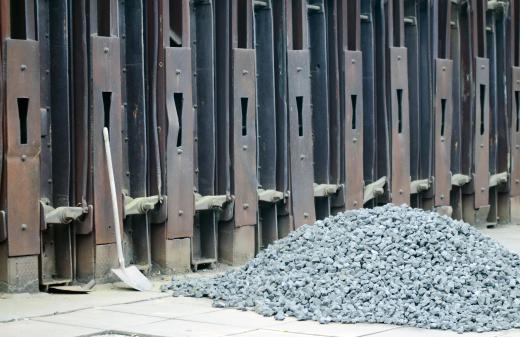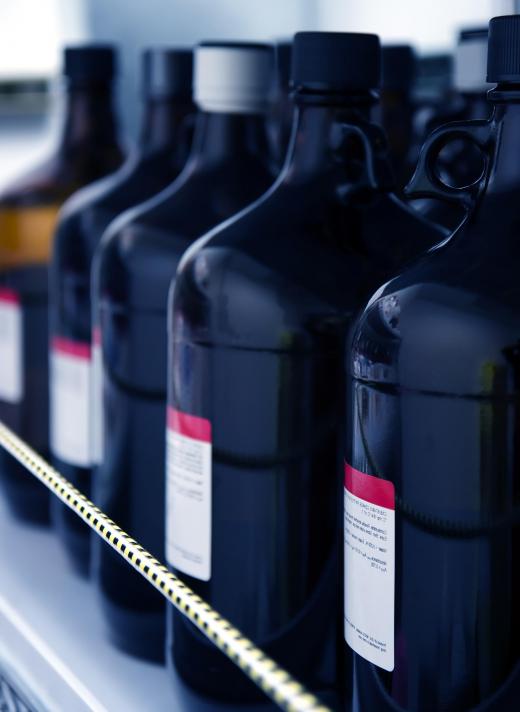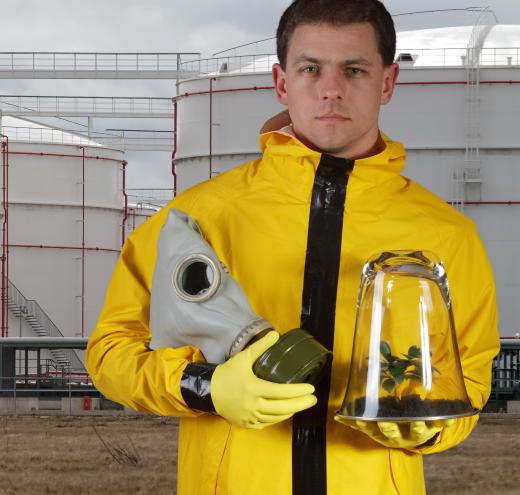What Is White Phosphorus?
The element phosphorus exists in three main forms, or allotropes — white, red and black — of which white phosphorus, consisting of four phosphorus atoms arranged an a tetrahedral molecule, is the most reactive. It is a white, waxy solid that melts at 111.2°F (44°C) and boils at 536°F (280°C). In impure form, containing traces of red phosphorus, it often has a yellow color and is sometimes called yellow phosphorus. It is insoluble in water, but dissolves in some organic solvents. The white form of the element, unlike the others, is extremely flammable — igniting in air at 86°F (30°C) — and highly toxic — the lethal dose for humans is estimated to be about 0.0018 ounces (0.05 grams).
An interesting property of white phosphorus is its chemiluminescence in the presence of air — this is clearly visible as a green glow when it is viewed in the dark. The glow is thought to be connected to the partial oxidation of the vapor. Despite having been known about and investigated since the element was first isolated in the 16th century, the exact chemical mechanism behind the glow remains, at the time of writing, unclear. When exposed to light, the white form slowly converts to red phosphorus. In the laboratory, it is normally stored under water in darkened glass containers.

Phosphorus is produced industrially by reacting phosphate rocks with sand and coke at high temperatures. The sand reacts with the phosphate, forming calcium silicate and phosphorus pentoxide (P2O5), which is reduced by the coke to gaseous elemental phosphorus. This is then condensed into phosphorus in its white form.
Historically, white phosphorus was used in the manufacture of matches; however, safer alternatives, including some less toxic phosphorus compounds, are now used. Workers in match factories in the 19th century often suffered from a condition known as “phossy jaw,” a painful and debilitating decay of the jawbone resulting from chronic exposure to phosphorus vapor. It was also formerly used in some rat poisons.

Today, its main uses are in the production of phosphoric acid, which is used in the food industry and in some cleaning products, and the manufacture of phosphate fertilizers. Much of it is converted into red phosphorus, which is non-toxic and less flammable. This form of phosphorus is used in some pyrotechnic mixtures for fireworks.
White phosphorus also has major military applications — for example, in incendiary weapons, in flares used to illuminate enemy positions, and in smoke screens. Combustion in the air produces phosphorus pentoxide (P2O5). This compound is extremely hygroscopic; that is, it rapidly absorbs moisture from the air, forming droplets of phosphoric acid. These droplets form a dense, white smoke that is very effective in concealing anything that lies within. For this reason, white phosphorus is used in smoke grenades to conceal troop movements.

The most controversial military use of white phosphorus has been in incendiary weapons. This substance burns fiercely, spitting out globules of flaming, molten phosphorus that can start new fires and inflict severe burns on anyone in the vicinity. Since the ignition temperature is well below body temperature, the burning material is difficult to extinguish — the flames can be smothered, but the phosphorus will re-ignite as soon as it has access to oxygen. Incendiary weapons based on white phosphorus were first used in World War I, and have been employed in many subsequent conflicts. In the military context, it is sometimes nicknamed “WP” or “Willie Pete.”

The use of WP in flares and smoke screens, and as an incendiary weapon against military targets is, as of 2011, permitted under international law; however, the use of incendiary weapons in areas with civilian populations is not. The USA, Israel and Russia have been accused of the illegal use of white phosphorus munitions in late 20th and early 21st century conflicts. Attempts, so far unsuccessful, have been made to have WP classified as a chemical weapon, due to its toxicity and the irritating effects of the smoke produced by its combustion. These moves have been opposed on the grounds that the element’s toxicity is incidental, and not the reason for its use.
AS FEATURED ON:
AS FEATURED ON:















Discuss this Article
Post your comments